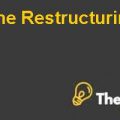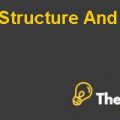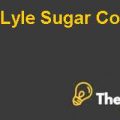
INTRODUCTION
This report focuses on the performance of the two competing companies in the pharmaceutical industry. GSK and Novartis have been compared, based on the number of ratios and common size income statement and balance sheet analysis for the years 2011, 2012 and 2013. Both the company’s auditors have expressed an unqualified opinion over the financial statements of the company and this ensures that these statements are free from all sort of material misstatements and errors.
Novartis international AG is one of the leading pharmaceutical companies in the pharmaceutical industry. The company has its head office based in Basel, Switzerland. Novartis is one of the leading companies with the highest level of sales of around US $ 57.9 billion. The company is also a member of the European Federation of Pharmaceutical industries and Associations. Although the company is new in this industry, but it has manufactured many successful drugs so far such as Gleevec. Today around 125000 people are working with the company,
On the other hand the second company, Glaxo Smith Kline is a British multinational pharmaceutical, vaccines, biologics and consumer healthcare company. The company is also listed on the London Stock Exchange. The drugs and vaccines manufactured by the management of the company for major diseases such as cancer, asthma, diabetes, infections and mental health conditions include Augmentin, Flovent, Lovaza, Advair etc. The company is also working on to invent a vaccine to overcome malaria. Apart from this the company has also been ranked among the International Pharmaceutical Companies in the Access to Medicines index in many years including 2014.
RATIO ANALYSIS
COMPANY A (GSK)
CURRENT RATIO
The current ratio shows the proportion of total current debts that could be paid immediately by the current assets. The current ratio for GSK was 2.27 times and 1.90 times in the years 2012 and 2013 respectively. While the current ratio for Novartis for each of the above years was 1.16 times and 1.58 times. The ratios clearly indicate that the current ratio for GSK has been declining. This means the company is facing issues in managing its working capital cycle and policies. However, on the other hand the current ratio for Novartis has improved after 2012. GSK needs to manage its working capital policies. The company needs to change the level of debt in the company’s structure. This is an alarming situation for the management of GSK. The decrease in the current ratio of GSK is moderately significant while the increase in current ratio on for Novartis is quite significant.
|
Current Ratio: |
Current Assets |
9404169 |
2.27 |
28004 |
1.164 |
10922720 |
1.907 |
30542 |
1.158 |
|||||
|
Current Liabilities |
4151055 |
24051 |
5726508 |
26368 |
DEBT RATIO
The debt ratio shows the level of debt in the capital structure of the company. The debt ratio for GSK is 0.29 in 2012 and in the year 2013 it is 0.367. This shows that the company has borrowed more funds to finance its assets. The increase in the debt ratio for GSK is quite significant while for Novartis the decrease in debt ratio is insignificant. This shows that the financial risk assumed by GSK is much higher than that of Novartis. The main reason for this is that, GSK had to pay debt payments on time. If it defaults anywhere, it could break its debt covenants.Novartis is managing well its debt ratio and the level of debt in the capital structure of the company. Novartis is performing better regarding this ratio.
|
Debt ratio |
Total debt |
4771734 |
0.29 |
54997 |
0.443 |
6589497 |
0.367 |
51782 |
0.410 |
|||||
|
Total assets |
16243325 |
124216 |
17938810 |
126254 |
ASSET TURNOVER RATIO
Asset turnover tells us about how much sales the company is generating given the assets of the company. The asset turnover ratio for GSK is 0.37 in 2012 and in 2013 it is 0.369. On the other hand, asset turnover for Novartis is 0.117 in 2012 to 0.116 in 2013. The asset turnover ratios for both the companies have declined from 2012 to 2013. This shows that the companies are not efficiently utilizing their assets. The efficiency and utilization ratios are too low here. However, one thing to note here is that although the ratios for both the companies have been dropped but the decrease is quite insignificant.However, to further analyze the ratio it needs to be interpreted with regard to the other ratios, such as Dupont analysis that are not required today...............................
This is just a sample partial case solution. Please place the order on the website to order your own originally done case solution.













